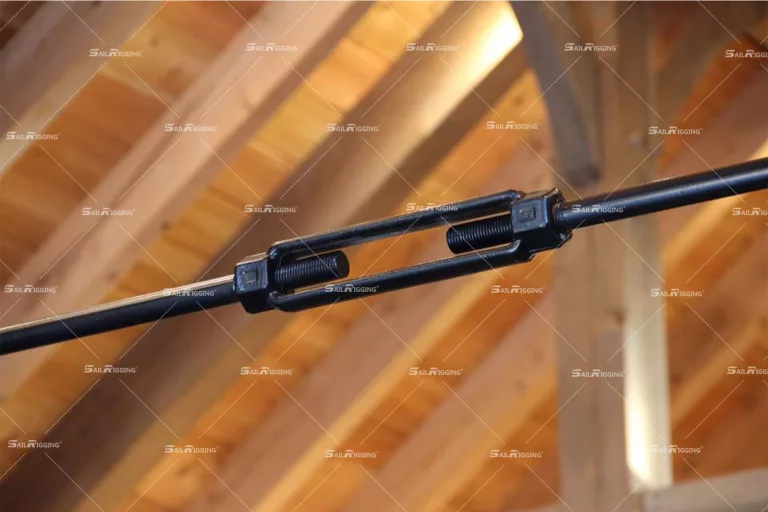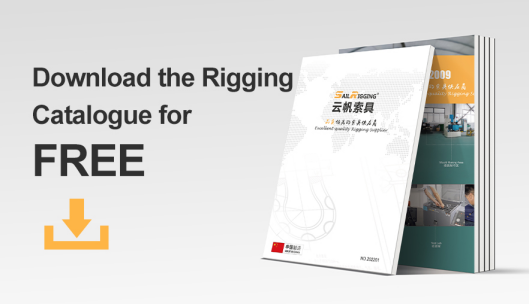Turnbuckle rod assemblies play an essential role in architectural design and construction. These versatile systems are primarily used to provide precise tensioning in various building components, ensuring the integrity of key structural elements. Whether for cross-bracing, canopies, or suspension systems, turnbuckle rod assemblies are indispensable in modern architecture. Today we will explore the significance of turnbuckle rod assemblies in architectural applications, their functionality, design considerations and etc.
What Are Turnbuckle Rod Assemblies?
A turnbuckle rod assembly is a tensioning device used to adjust the length of a rod or cable in a structural system. It consists of three main components:
- Rod (or Cable): The rod or cable serves as the primary tensioning element in the assembly. The rod is typically threaded at both ends, and the turnbuckle is used to adjust its length.
- Turnbuckle: The turnbuckle is a mechanical device that consists of a body with internal threads at both ends. These threads allow the turnbuckle to be screwed onto the threaded rod or cable, tightening or loosening the assembly to achieve the desired tension. The turnbuckle body are usually US drop forged turnbuckles or DIN1480 turnbuckles.
- End Fittings: The ends of the rods are often fitted with clevises, eyes, or hooks to connect to other structural components, such as beams or support columns.
- Turnbuckle rod assemblies are used to apply precise tension to structural elements, helping maintain alignment, prevent deformation, and ensure that forces are distributed evenly across the structure.
How Turnbuckle Rod Assemblies Work in Architecture
In architecture, the primary purpose of a turnbuckle rod assembly is to provide adjustable tension in structural elements. This is particularly useful in applications that require dynamic adjustment, where the structure needs to be periodically retightened or repositioned. Key functions include:
- Load Distribution: Turnbuckle rod assemblies help distribute load forces evenly across a structure. By adjusting the tension in the rods, architects and engineers can ensure that the load is shared efficiently, reducing the risk of stress concentration in certain areas.
- Structural Alignment: These assemblies are often used in systems where precise alignment is crucial. In applications such as cross-bracing or suspension cables, turnbuckle rod assemblies ensure that the structural components stay in the correct position and maintain their integrity over time.
- Flexibility and Adjustment: One of the unique benefits of turnbuckle assemblies is the ability to easily adjust the length and tension of the rod or cable. This is particularly useful in temporary structures or systems that may be exposed to thermal expansion or other factors that could affect their tension.
Applications
Turnbuckle rod assemblies have numerous applications in modern architectural design, where their ability to provide adjustable tension and support can make a significant difference in both structural performance and visual impact. Here are some of the most common uses:
- Cross-Bracing and Stabilization: Cross-bracing is one of the most common applications for turnbuckle rod assemblies. In large buildings, bridges, and towers, these assemblies are used to reinforce structures by providing lateral stability. The adjustable tension ensures that the bracing system can be fine-tuned to provide the optimal balance between rigidity and flexibility. Cross-bracing is especially important in structures that are subject to wind loads or seismic activity.
- Suspension Systems: Turnbuckle rod assemblies are commonly used in suspension systems for architectural features such as tensioned canopies, dome structures, and bridges. In these applications, the turnbuckles allow for precise tensioning of cables or rods, ensuring that the structure remains taut and structurally sound. Turnbuckles help maintain the correct tension in the suspension system, preventing sagging or deformation.
- Canopies and Roof Structures: Architectural canopies and tensioned roofs require the application of controlled tension to maintain their shape and ensure durability. Turnbuckle rod assemblies are often used in the tensioning of cables or rods that support fabric or other materials. The turnbuckles help adjust the tension to prevent sagging and ensure that the canopy or roof remains taut, providing both structural support and aesthetic value.
- Structural Reinforcement: In some cases, turnbuckle rod assemblies are used to reinforce existing structures. Seismic retrofitting or reinforcement of older buildings often requires tensioned rod systems to add strength and stability. By installing turnbuckle rod assemblies, the structure can be given additional support without major renovations, ensuring that it can withstand forces like earthquakes or heavy winds.
- Bridges and Large-Scale Infrastructure: In bridge construction or large-scale infrastructure projects, turnbuckle rod assemblies are critical for maintaining the tension in suspension cables and cable-stayed bridges. The precision of these assemblies allows for fine-tuning the cables to the exact required tension, which is essential for maintaining the structural integrity and safety of these large spans.
Design Considerations
While turnbuckle rod assemblies offer great versatility in architectural applications, several factors must be considered when selecting and designing these systems:
- Load Capacity: One of the most important design factors is the load capacity of the rod and turnbuckle. The material and dimensions of the rod and turnbuckle must be chosen to ensure that the system can handle the forces it will encounter, whether from wind, seismic forces, or other environmental factors.
- Material Selection: The material used for the rod, turnbuckle, and end fittings is critical to the system’s performance. Common materials include carbon steel, stainless steel, and galvanized steel. Stainless steel is preferred for its corrosion resistance, particularly in marine or humid environments, while carbon steel may be used in dry, low-corrosion settings.
- Corrosion Resistance: In many architectural applications, particularly those exposed to the elements, corrosion resistance is essential. Coatings such as galvanization or powder coating can be applied to the turnbuckle and rod assemblies to protect against rust and wear.
- Adjustment Mechanism: The ease of adjustment is another important consideration. Turnbuckles should allow for smooth operation without binding, ensuring that they can be fine-tuned as needed to maintain proper tension.
- Aesthetic Integration: Turnbuckle rod assemblies are often visible in architectural designs, so their appearance must align with the overall aesthetic of the structure. Sleek, clean lines and a polished finish are often preferred for modern architectural projects, while more industrial designs might incorporate rougher finishes.
Turnbuckle rod assemblies are an essential component in the architecture of modern buildings and infrastructure. Their ability to provide adjustable tension, ensure structural stability, and support complex design elements makes them invaluable for architects and engineers alike. From cross-bracing and suspension systems to canopies and roof structures, turnbuckle rod assemblies play a critical role in maintaining both the strength and aesthetic appeal of architectural projects. If you are not sure how to choose turnbuckle rod assembly, please feel free to contact Sail Rigging.





